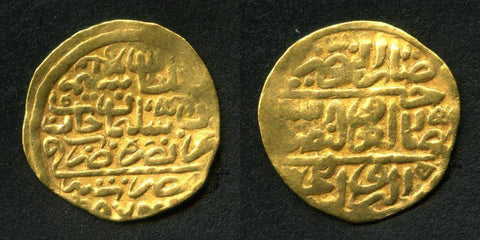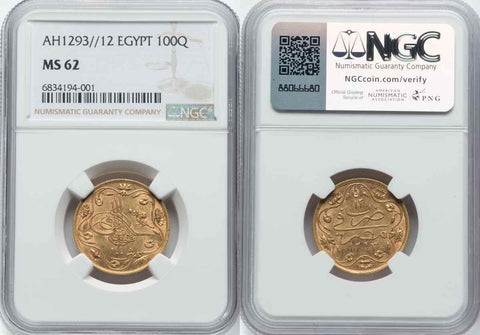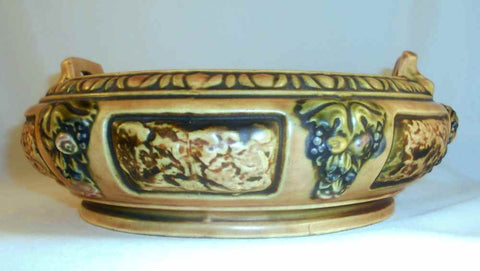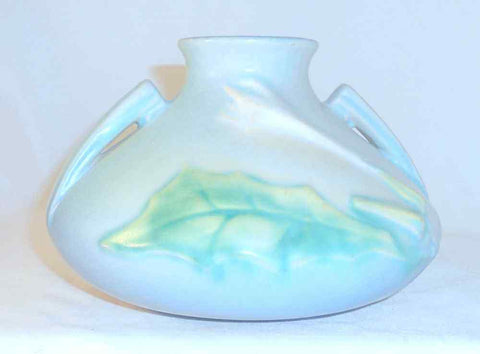Unusual James C Seagreaves Mid 20th Century Glazed Cast Large Black Redware Bird
Description: A nice large glazed and nicely decorated redware bird figurine made by James C Seagreaves. This black colored bird with light blue speckles and a brown beak with two black nostrils and yellow eyes. The bird figurine has raised design outlining the feathers in the wings and the tail. These lines are mostly curved in what looks like semicircles on the wing and less so on the tail. The bird has two raised hearts at the bottom of its neck with tulips emanating from the hearts and climbing along the sides of the bird's neck. The elongated bird is standing or possibly laying down on a black oval base with no legs apparent. The base is marked on the underside "JCS." The head of the bird is looking forward and slightly tilted to one side. The piece is hollow but has raised details throughout. A beautiful piece of modern folk art redware to add to your collection. Please carefully view photos as they are part and parcel of our description.
Date: Uncertain but most likely sometime in the period 1950-1970.
Origin: Purchased at an estate auction in southeastern Pennsylvania.
Size and Weight: The base measures ~3 3/4" by ~2 1/2", while the bird itself is ~10 1/2" long, is ~3 1/4" at its widest, and ~6 1/4" at its highest. The piece weighs about One pound two ounces.
Maker: James Christian Seagreaves.
Marks: Marked "JCS" on bottom in cursive calligraphy.
Distinguishing Characteristics - Most Interesting About The Piece: A beautiful piece of contemporary redware made by a master potter. A beautiful piece, which deserves a prominent spot in your redware collection.
Condition: The bird is in good condition with no cracks, repairs, or hairlines. Examination of the piece did not reveal any crazing to the glaze, but the color of the piece makes it very difficult to ascertain such a statement. We do see black loss around the eyes revealing the white gesso under it. We see similar small spots on the bottom of the base. Finally, we do see a slight loss to the glaze, possibly original to the making, on the bottom side of the tip of the beak (see the last photo). All of these issues are minor and difficult to see and the piece would still display nicely in your collection. Please see photos for additional condition information and to appreciate the beauty of this piece.














